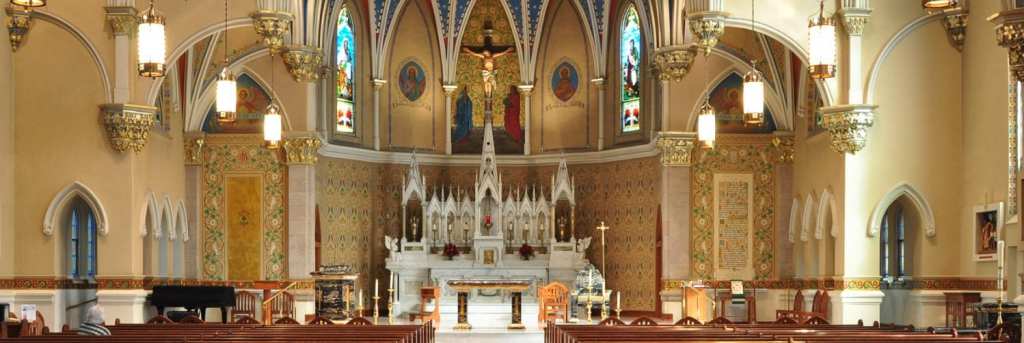Trending Now
If you’ve done even a light reading on the history of Christianity, it should come as no surprise that the Church has a long record of opposing the sciences – particularly fields like astronomy. So it might come as a bit of a shock that you can find astronomical symbols and meridian lines in churches all across Europe.

Photo Credit: Wikipedia
The alliance, it turns out, began in the 1500s when the east and the west halves of Christendom realized their calendars were a full 10 days off. The reason it was important that they reconcile was simple: Easter.

Photo Credit: Wikipedia
Easter is to be celebrated, per the First Council of Nicaea, on the same date from now until eternity. A date that is not fixed and straightforward, but rather the first Sunday after the first full moon after the spring equinox.

Photo Credit: Wikipedia
Commemorating the rising of Jesus Christ from the dead needed to be done on this particular day because church leaders believed that if the faithful worshipped on the wrong Sunday, or on a different day that depended on where one lived, their souls could be at risk.

Photo Credit: Wikipedia
Pope Gregory XIII had solved the calendar issue with his Gregorian reform in 1582, which meant that now, no matter where a person lived, March 21 would always fall on the same day. What the Gregorian Calendar couldn’t help with was determining when the astronomical spring equinox would fall each year in the future. The church needed a more precise tool of measurement, and they found one in the meridian line.

Photo Credit: Instagram, cnewa1926
A meridian line is made to track the sun’s movement from north to south on its annual migration between the summer and winter solstices. The sun’s image on the cathedral floors shifts, moving slowly along the line, and halfway between solstices lie the spring and autumn equinoxes. In the 16th century, people waited until the solar circle on the floor indicated spring, then celebrated Easter on the first Sunday after the next full moon.

Photo Credit: Wikipedia
They may be simple in concept, but the execution of placing the meridian lines on cathedral floors was anything but – church interiors boast architecture like columns, cornices, and other decorative pieces that aren’t easily moved and can get in the way of the essential beams of sunlight.

Photo Credit: Flickr, Dimitris Kamaras
The first meridian line was installed in Bologna by artisan and cartographer Egnazio Danti in 1575, and then redone in 1655 after the church was enlarged, this time by astronomer and engineer Giovanni Domenico Cassini (he later became the director of the Paris Observatory and helped discover Jupiter’s famous “red spot”). The line you can see in the Basilica di San Petronio today remains true to the 17th-century design.

Photo Credit: Wikipedia
At the time, it wasn’t seen as at odds with the church’s belief system or teachings – the meridian lines were an attempt to line up human religion with the divine and invisible ticking hands that move the universe. The harmony dissolved slowly, as Church leadership began to realize that there, on the very floors of their own buildings, was the proof that the universe was stranger than their theology could explain – or even that they were allowed to imagine. They had not expected that the Lord’s house would provide proof that their teachings about how the Earth was at the center of the universe was wrong.

Photo Credit: Wikipedia
Paul Mueller, a modern-day employee of the Vatican Observatory and a member of the Society of Jesus, feels that there’s a balance to be struck. While many on both sides of the line drawn between science and faith don’t understand how or why a person would want to straddle it, Mueller believes that reason is crucial to religion.
“If we are doing math, if we are doing science – for that matter, if we are doing art – any human activity done with generosity and reverence is acting in God’s image. Science is included in that.”

Photo Credit: Wikipedia
Science, of course, has moved on to challenge faith and religion in new ways. Meridian lines were relegated to simple timekeeping devices (they still marked an exact solar noon, as long as the building had not shifted) by the advent of telescopes in the mid-18th century.

Photo Credit: Instagram, ardinglynova
They continue to mark the Earth’s revolutions around the sun, marking solstices and equinoxes faithfully for those who walk into old cathedrals and remember to look down, as well as up.
h/t: Atlas Obscura
Check these out before you go!
https://didyouknowfacts.com/inside-church-portugal-literally-covered-gold/
https://didyouknowfacts.com/accidental-mummies-beneath-bremens-st-peters-cathedral/






